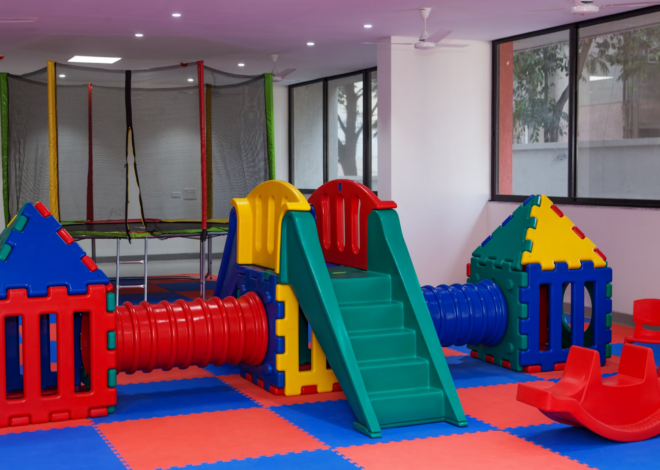
15 Signs CPS Looks for in Child Abuse Cases
Child Protective Services (CPS) is a government agency that is responsible for investigating reports of child abuse and neglect. The primary goal of CPS is to ensure the safety and well-being of children who are at risk of harm. When a report of abuse or neglect is made, CPS will conduct an investigation to determine if the child is in danger and if intervention is necessary to protect the child. CPS workers are trained to assess the safety of the child, the risk of future harm, and the ability of the parents or caregivers to provide a safe and nurturing environment for the child. If it is determined that a child is in danger, CPS has the authority to remove the child from the home and place them in foster care or with a relative while the situation is being addressed. CPS also provides support and services to families in order to prevent future instances of abuse or neglect.
Child Protective Services plays a crucial role in protecting children from harm and ensuring that they have the opportunity to grow up in a safe and nurturing environment. The work of CPS is often challenging and emotionally taxing, as workers are faced with difficult decisions about the safety and well-being of children. However, CPS is an essential part of the child welfare system, and its efforts are vital in preventing and addressing child abuse and neglect. By identifying and intervening in cases of abuse and neglect, CPS helps to ensure that children have the opportunity to thrive and reach their full potential.
Key Takeaways
- Child Protective Services (CPS) is a government agency responsible for investigating reports of child abuse and neglect.
- Physical signs of abuse can include unexplained bruises, burns, or fractures, as well as frequent injuries.
- Behavioral signs of abuse may include aggression, withdrawal, fear of certain adults, or difficulty forming relationships.
- Emotional signs of abuse can manifest as low self-esteem, depression, anxiety, or extreme mood swings.
- Neglect signs may include poor hygiene, malnutrition, or frequent absences from school.
- Signs of sexual abuse can include difficulty walking or sitting, sudden changes in behavior, or inappropriate sexual knowledge or behavior.
- Signs of domestic violence in the home may include a parent or caregiver who is controlling, aggressive, or violent, as well as a child who is fearful or anxious around them.
Physical signs of abuse
Physical signs of abuse can vary depending on the type and severity of the abuse. Some common physical signs of abuse include unexplained bruises, welts, or cuts on the body, particularly in areas that are not typically injured during normal play or activities. Fractures, burns, and bite marks may also be indicators of physical abuse. In some cases, children may have injuries that are in different stages of healing, which can be a sign that the injuries were not accidental. Additionally, children who are being physically abused may be overly cautious or fearful, particularly around their caregivers.
Another physical sign of abuse is frequent injuries or a pattern of injuries that are inconsistent with the explanation given for them. For example, a child who frequently has unexplained injuries or who has a history of injuries that do not match the explanation provided may be experiencing physical abuse. It is important to note that not all injuries are indicative of abuse, but when there is a pattern of unexplained injuries or injuries that are inconsistent with the explanation given, it may be cause for concern.
Behavioral signs of abuse
Children who are experiencing abuse may exhibit a range of behavioral signs that can indicate their distress. Some common behavioral signs of abuse include aggression, withdrawal, or extreme shyness. Children who are being abused may also have difficulty forming relationships with others, including their peers and adults. They may exhibit regressive behaviors such as bedwetting or thumb sucking, particularly if these behaviors were previously outgrown. Additionally, children who are being abused may have difficulty concentrating or may exhibit signs of anxiety or depression.
Another behavioral sign of abuse is a sudden change in behavior or personality. For example, a child who was previously outgoing and social may become withdrawn and isolated. Conversely, a child who was previously quiet and reserved may become aggressive or disruptive. Changes in behavior can be indicative of distress or trauma, and it is important to pay attention to these changes and seek help if necessary. It is important to note that behavioral signs of abuse can vary depending on the individual child and their unique circumstances, so it is important to consider these signs in conjunction with other indicators of abuse.
Emotional signs of abuse
| Emotional Signs of Abuse | Description |
|---|---|
| Fear | Feeling afraid or anxious, especially around the abuser |
| Low self-esteem | Feeling worthless or inadequate due to constant criticism |
| Guilt | Feeling responsible for the abuser’s behavior |
| Depression | Feeling sad, hopeless, and losing interest in activities |
| Anxiety | Feeling nervous, on edge, or having panic attacks |
Emotional signs of abuse can be more difficult to detect than physical or behavioral signs, but they are no less important. Children who are experiencing emotional abuse may exhibit signs of low self-esteem, self-blame, or feelings of worthlessness. They may also have difficulty expressing their emotions or may exhibit extreme emotions such as anger or sadness. Children who are being emotionally abused may also have difficulty forming healthy relationships with others and may struggle with trust issues.
Another emotional sign of abuse is a lack of interest in activities that were previously enjoyable for the child. For example, a child who was previously enthusiastic about sports or hobbies may suddenly lose interest in these activities. Additionally, children who are being emotionally abused may exhibit signs of anxiety or depression, such as changes in appetite or sleep patterns. It is important to pay attention to these emotional signs and provide support and intervention for children who may be experiencing emotional abuse.
Neglect signs
Neglect is a form of abuse that occurs when a caregiver fails to provide for the basic needs of a child, including food, shelter, clothing, medical care, and supervision. Some common signs of neglect include poor hygiene, malnutrition, untreated medical conditions, and frequent absences from school. Children who are experiencing neglect may also have inadequate clothing or live in unsafe or unsanitary conditions. Additionally, children who are being neglected may be left unsupervised for long periods of time or may be consistently late or absent from school.
Another sign of neglect is when a child’s basic needs are consistently unmet despite the caregiver’s ability to provide for them. For example, a child who consistently goes without food or adequate clothing despite the caregiver’s ability to provide these necessities may be experiencing neglect. It is important to note that neglect can have serious long-term consequences for children, including developmental delays, poor physical health, and emotional trauma. It is crucial to identify and address cases of neglect in order to ensure the safety and well-being of children.
Signs of sexual abuse

Sexual abuse is a particularly devastating form of abuse that can have long-lasting effects on children. Some common signs of sexual abuse include physical symptoms such as difficulty walking or sitting, pain or itching in the genital area, and unexplained sexually transmitted infections. Children who are being sexually abused may also exhibit behavioral signs such as sudden changes in behavior or personality, regressive behaviors such as bedwetting or thumb sucking, and avoidance of certain people or places.
Another sign of sexual abuse is when a child exhibits knowledge or interest in sexual behaviors that are not age-appropriate. For example, a young child who demonstrates knowledge of sexual acts or uses sexual language that is beyond their developmental level may be experiencing sexual abuse. It is important to note that sexual abuse can be difficult to detect, as many children do not disclose their experiences due to fear, shame, or confusion. It is crucial to create a safe and supportive environment for children to disclose their experiences and to provide appropriate intervention and support for those who have been sexually abused.
Signs of domestic violence in the home
Domestic violence in the home can have serious implications for children who are exposed to it. Some common signs of domestic violence in the home include frequent injuries or unexplained bruises on the child or their caregiver. Children who are exposed to domestic violence may also exhibit behavioral signs such as aggression, withdrawal, or difficulty forming relationships with others. They may also have difficulty concentrating or may exhibit signs of anxiety or depression.
Another sign of domestic violence in the home is when a child expresses fear or anxiety about going home or being around certain family members. Children who witness domestic violence may also exhibit signs of trauma such as nightmares, bedwetting, or regressive behaviors. It is important to note that exposure to domestic violence can have serious long-term effects on children’s well-being and development. It is crucial to provide support and intervention for children who are exposed to domestic violence in order to ensure their safety and well-being.
In conclusion, Child Protective Services plays a crucial role in protecting children from harm and ensuring that they have the opportunity to grow up in a safe and nurturing environment. Physical signs of abuse can include unexplained bruises, welts, cuts on the body, fractures, burns, bite marks, frequent injuries inconsistent with explanations given for them; Behavioral signs can include aggression, withdrawal, extreme shyness; Emotional signs can include low self-esteem, self-blame; Neglect signs can include poor hygiene, malnutrition; Signs of sexual abuse can include difficulty walking or sitting; Signs of domestic violence in the home can include frequent injuries on the child or caregiver. It is crucial to provide support and intervention for children who are experiencing abuse or neglect in order to ensure their safety and well-being.
If you’re interested in learning more about the signs that Child Protective Services looks for, check out this article on 15 signs CPS looks for. This article provides valuable insight into the behaviors and circumstances that may raise red flags for CPS, helping parents and caregivers better understand what to be aware of in order to ensure the safety and well-being of their children.
FAQs
What are the signs CPS looks for?
CPS looks for signs of neglect, physical abuse, sexual abuse, emotional abuse, and domestic violence when investigating a family.
What are some signs of neglect that CPS looks for?
Signs of neglect that CPS looks for include inadequate supervision, lack of basic necessities such as food, clothing, and shelter, poor hygiene, and unmet medical needs.
What are some signs of physical abuse that CPS looks for?
Signs of physical abuse that CPS looks for include unexplained bruises, fractures, burns, or other injuries, inconsistent explanations for injuries, and fear of a specific caregiver.
What are some signs of sexual abuse that CPS looks for?
Signs of sexual abuse that CPS looks for include sexualized behavior, knowledge of sexual acts inappropriate for the child’s age, physical signs of abuse, and reluctance to be alone with a specific person.
What are some signs of emotional abuse that CPS looks for?
Signs of emotional abuse that CPS looks for include extreme behavior, delayed development, low self-esteem, and a lack of attachment to the parent or caregiver.
What are some signs of domestic violence that CPS looks for?
Signs of domestic violence that CPS looks for include a history of violence between caregivers, fear of a specific caregiver, and the child’s attempts to intervene in the violence.


